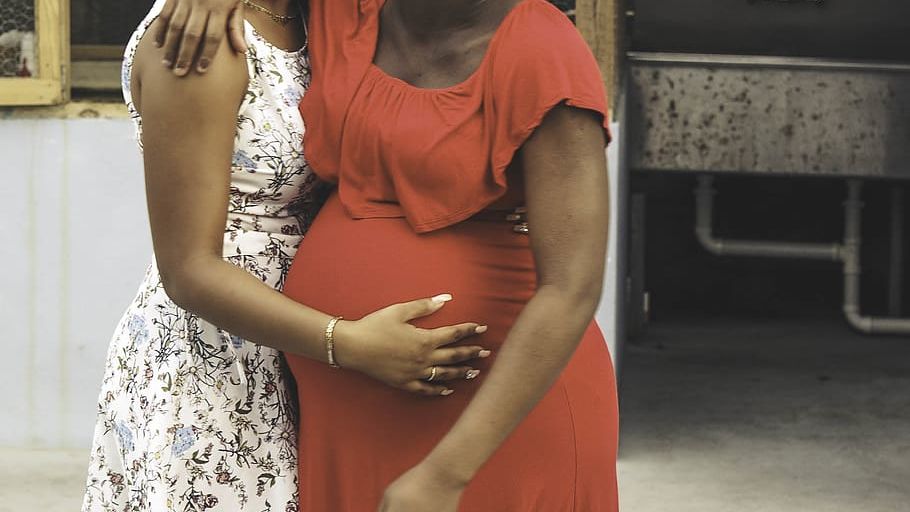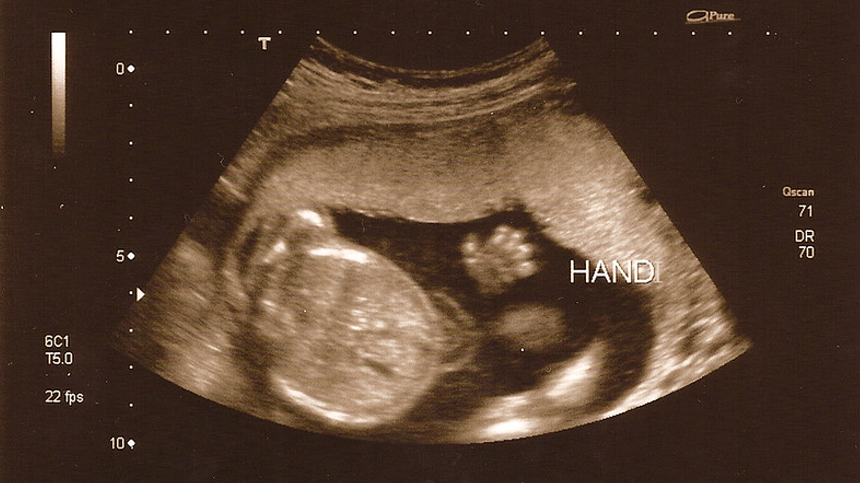Due Date and Gestation

Determining the baby's due date is one of the first things women do as soon as the learn they are pregnant. This date is usually confirmed or altered slightly at the first prenatal appointment.
However, current evidence-based information indicates women should actually focus on a delivery range that equates to 14 days on either side of that date, or 29 days in total, in which almost all women are expected to deliver.
This can help women manage their expectations better, avoid disappointment and anxiety, and help them be prepared in the event they deliver much earlier or later than their given “due date”.
Further, in this range, women are not considered early or late, as women often describe their pregnancy if they deliver before or after their due date. Current estimated due dates use an algorithm that does not take into account variability in women’s menstrual cycles, or health or lifestyle factors.
Background
Determining gestational age in pregnancy is important for:
The overall assessment of fetal growth, development, and overall health
Early identification of possible complications
Timing of certain screening tests
Certain interventions
Identification of preterm labor
Evaluation of postterm risks
Although women are given an actual due date, current evidence-based information indicates it is more accurate for women to be given a “delivery range”, which is more of a 4-week time frame rather than a specific date, based on many variables. These variables include significant variation in women’s cycles, ovulation date, time it takes for implantation, as well as a woman’s overall health, prior pregnancies, lifestyles, and many other factors.
Trimesters
Trimester timing also differs, primarily by source, which is likely dependent on whether the source of information includes gestation as 40 or 42 weeks.
The American College of Obstetricians and Gynecologists (ACOG) indicates the second trimester begins at 14 weeks, and the third trimester begins at 28 weeks.
However, according to a popular and often-cited obstetric textbook (2016), the first trimester of pregnancy extends through completion of 14 weeks. The second trimester extends from week 15 through 28, and the third trimester extends from 29 weeks through 42 weeks.
Some additional online and textbook sources indicate the second trimester begins at 13 or 14 weeks, and the third trimester begins at 27 or 28 weeks.
"Due Date"
From the date of the start of a woman’s Last Menstrual Period (LMP), pregnancy lasts approximately 40 weeks, or 280 days (known as Naegele’s rule). Naegele’s rule was originally developed because although the moment of conception is usually not known, the LMP – for most women – is usually known.
However, Naegele's rule is problematic and was mostly used prior to the invention and routine use of ultrasound.
The rule is based on the assumption that all women have 28-day cycles, all women ovulate at exactly day 14, all women have perfectly regular cycles, and all women will have a gestation of 280 days – none of which is true.
Despite this, the rule is still used, which gives women false expectations, causes them to fixate on a very specific date, and leads to disappoint or frustration when labor has not occurred on or before that date.
"Forty weeks is such a simple, round, convenient figure that it has proved difficult to challenge, despite criticism. Nonetheless, what might have been an appropriate formula...in the 19th century deserves to be revisited in the 21st."
It is estimated that 90% of women have a menstrual cycle between 23 and 35 days. This variation almost solely occurs in the proliferative phase (menstruation to ovulation).
At least one study noted that even in women with regular cycles and certain LMP, there was a still a discrepancy in gestation of more than 5 days in 25% of cases.
It is also estimated that only 70% of women deliver within 10 days of their given due date, even when the date is estimated with the help of ultrasound (see Unknown/Unreliable LMP).

Further, a separate study of 125 naturally conceived single, healthy pregnancies in which conception date was known, identified a gestational age difference of 37 days, or more than 5 weeks.
It is also assessed that fetuses that take longer to progress from fertilization to implantation also have longer gestations from implantation to delivery, illustrating that differences in gestation can occur even after fertilization.
Other factors are also known to affect the duration of pregnancy, including number of fetuses, socio-demographic characteristics, medical complications, previous preterm delivery, cigarette smoking (due to inflammation), and maternal age.
Some researchers have suggested that Naegele’s rule should be removed from practice, especially due to the routine use of ultrasound. Others have suggested changing the rule or adding several days to it, since it is more likely that women will ovulate later rather than earlier than predicted.
Taken together, a woman’s “due date” should not be the day of expected delivery – it should bev the day used to mark a two-week time frame before and after, which is the actual expected time of delivery (i.e. a 29-day window). A suggestion was made to provide women with this time frame, rather than a “due date”, as far back as 1991.
Therefore, if a woman’s due date is June 15, she would be expected to deliver anytime between June 1 and June 29, all of which would be considered normal (38-42 weeks); delivery earlier than 37 weeks is considered preterm. Most HCPs may intervene between 41 and 42 weeks, depending on the health of mother and baby.

Dating
Further confusing some aspects of "due date" is clinical gestation. Week 1 of pregnancy "begins" on the first day of a woman's period; women ovulate at the end of week 2, or the very beginning of week 3, depending on cycle length, and fertilization occurs about 24 hours later. A woman is not "physically pregnant” until after successful implantation, which occurs, on average, about 7 to 10 days after fertilization.
For example, if a woman has a 28-day cycle:
Week 1, Day 1: Start of period
Week 2, Day 14: Ovulation
Because the egg is capable of fertilization for only 12 to 24 hours after ovulation, the date of ovulation may be taken as being the date of conception. With in vitro fertilization, the date of conception is known; therefore, the due date is calculated by adding 266 days (minus 2 weeks) to the date of conception.
Week 3, Day 1: Fertilization and travel to uterus
End of Week 3 to Week 4: Implantation (usually occurs 7 to 10 days after fertilization)
Week 4 of pregnancy is around the earliest time frame most women may expect a positive home pregnancy test (some women may get a positive test late in “week 3”, depending on the sensitivity of the test).
In embryology (fetal development), there are 38 weeks of development, with Day 1 being the day of fertilization, but from a clinical perspective, that is technically “weeks 2/3 of pregnancy”.
Unknown/Unreliable LMP
In some pregnancies, especially in women who did not have regular cycles prior to pregnancy, the LMP is either unknown or possibly unreliable. It is estimated that in 15% to 45% of pregnancies, women are uncertain of their LMP, they have irregular menstrual cycles, or they became pregnant soon after stopping the oral contraceptive pill.
In these cases, a “dating” ultrasound is used to determine gestational age. Ultrasound before 13 weeks and 6/7 days is the most accurate method to establish or confirm gestational age in pregnancy, but still has an accuracy of plus or minus 5 to 7 days.

Some HCPs will perform a dating ultrasound even with an LMP date, and use both the LMP date and ultrasound data to determine an average, or most likely gestational age.
Ultrasound is also very useful for women who do not realize they are pregnant until late in the first trimester or early second trimester. However, ultrasound dating becomes less accurate as pregnancy progresses. It is estimated that second trimester dating via ultrasound has an accuracy of plus or minus 7 to 10 days, and a third trimester ultrasound assessment has an accuracy of plus or minus 21 to 30 days.
Action
Women should ask their HCP as many questions as they need to understand the "due date" they are given, or why the date may have changed after their first ultrasound.
Women should not expect to deliver on their due date (only about 4% of women actually do), they should expect to deliver within two weeks before or after that date.
Currently, science cannot get much more accurate than that window. Even if that window is narrowed further to one week on either side, it is still estimated that less than 70% of women deliver within 39 to 41 weeks (based on statistics above).
If women try to avoid getting fixated on a particular and very specific date, they will likely feel less frustration if they go past that date. Women can get incredibly anxious as soon as their due date passes, which is normal – but so is delivering up to 42 weeks.
Women should also consider sharing their experience (below) related to their due date, including whether their due date changed after their appointment, or when they delivered in comparison to their due date.
Resources
Methods for Estimating the Due Date: Committee Opinion 700 (American College of Obstetricians and Gynecologists; May 2017)
FAQ: When Pregnancy Goes Past Your Due Date (American College of Obstetricians and Gynecologists; June 2017)